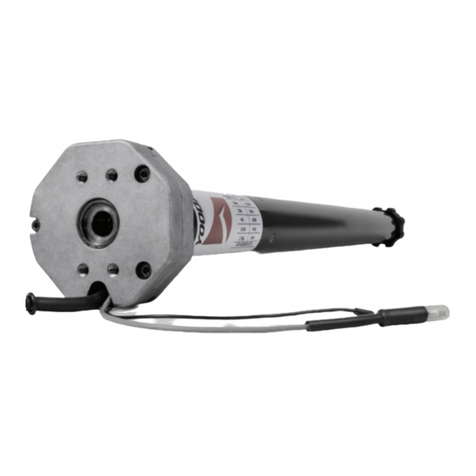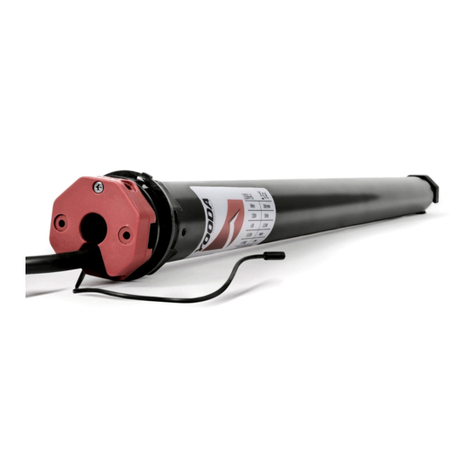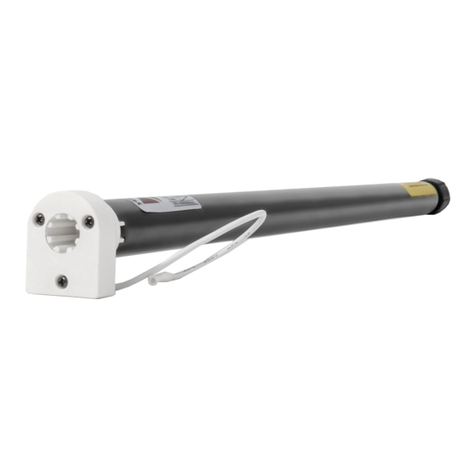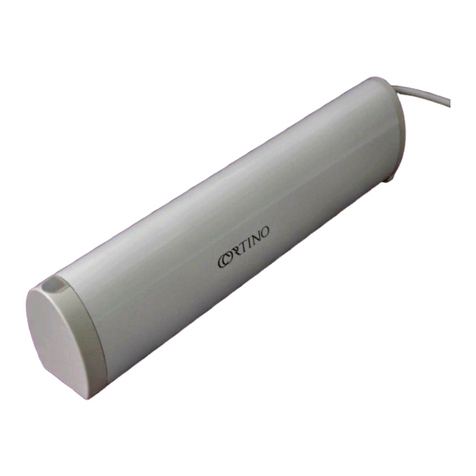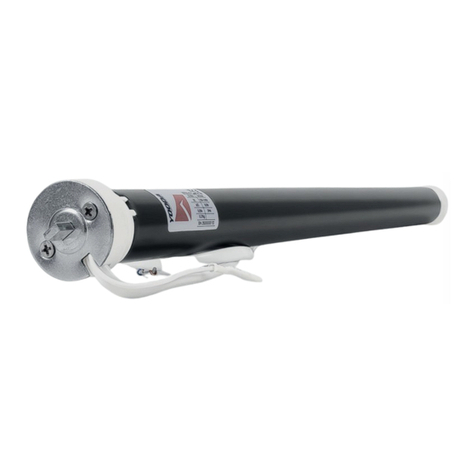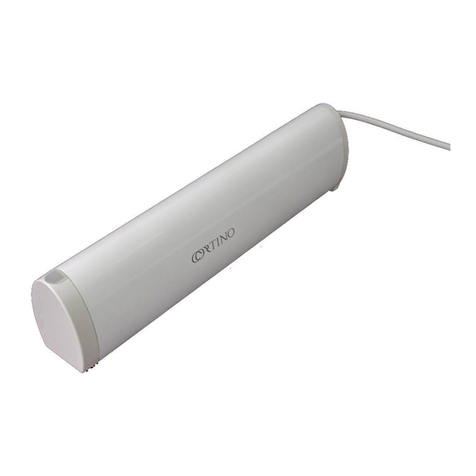
15. Deleting all transmitters
16. Activating impulse mode
17. Choosing a reaction to obstacle detected
18. Choosing obstacle detected operation mode
7
Motor will
make a sound.
Roller shutters will
make short
up/down movements.
Motor will
make a sound.
Roller shutters will
make short
up/down movements.
Roller shutters will
make 2 short
up/down movements.
Motor will make a several
short sounds.
Press
STOP button.
Press
programming
button P2.
Press programming button P2
on the A remote control.
All active transmitters
have been removed.
1. Longer than 6 seconds pause between series of button clicks during programming will cause device to switch off from
programming mode without saving any changes.
2. To activate impulse mode follow the procedure below. To deactivate impulse mode repeat this procedure.
Roller shutters
will make short
up/down movements.
Motor will make a sound.
Press programming
button P2 on any
remote control.
Roller shutters
will make short
up/down movements.
Motor will make
2 sounds.
When you press the direction
button once on the remote
control, the motor will make
a short move.
Press
UP button.
Press
DOWN button.
Roller shutters
will make short
up/down movements.
Motor will make a sound.
Roller shutters will make
short up/down movements.
Motor will make a sound.
Press programming
button P2.
Press
DOWN button.
Press
DOWN button.
If the motor will perform two short movements
up / down and will make a few sounds, it means
that the reaction 1 is started : when an obstacle
is detected the roller shutter will stop.
If the motor will performn short movement up / down
and will make a sound, it means that the reaction 2 is
started : when an obstacle is detected the roller
shutter will move in the opposite direction.
If the motor performs a short up / down
movement and make a sound, it means that
the drive is in mode 1 : The sensitivity of
obstacle detection is reduced to 20 cm from
the upper and lower limit positions.
If the motor performs two short up / down
movements and make two sounds, it means
that the motor is in mode 2 : The sensitivity
of obstacle detection is reduced to 10 cm
from the upper and lower limit positions.
If the motor performs three short up / down
movements and make three sounds, it
means that the motor is in mode 3: The
sensitivity of obstacle detection is reduced
along the entire height of the roller shutter.
Roller shutters
will make short
up/down movements.
Motor will make a sound.
Roller shutters
will make short
up/down movements.
Motor will make a sound.
Press programming
button P2.
Press
STOP button.
Press
DOWN button.
Motor will make a sound.
Roller shutters will
make short up/down
movements.
If signal transfering function is on, the motor after receiving signal will sends it back.
If the motor performs two short movements in both
directions and makes several sounds, the signal
transfer function is activated.
If the motor performs a short movement in both
directions and a make a sound, the signal transfer
function is deactivated.
Press and hold P2
programming button
for 5 seconds.
19. Function of signal transfering

